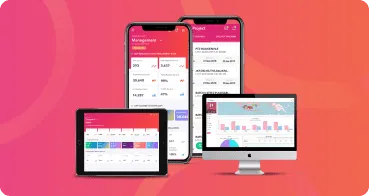How a PERT Chart Works
The more complex your project scope, the more necessary identification and mapping of the series of activities in a network model. One tool that you can use is PERT Chart. However, PERT, like any other project management tool, has advantages and disadvantages that you must manage effectively.
The charts in PERT Charts use nodes, generally visualized as rectangles or circles, to represent activities and achievements across a project. These nodes will later be connected by arrows that represent various activities that need to be completed.
Although not as popular as its ‘sibling’, Critical Path Method (CPM), PERT Chart is still effectively used by project managers to make realistic scheduling by setting the estimated status for each duration (optimistic time, most likely time, and pessimistic time). PERT considers these three-time estimates to get the expected activity time through the following formula:
(Optimistic Time + (4 x Most Likely Time) + Pessimistic Time)
This makes PERT charts useful when planning projects whose activity durations are uncertain.
Terms in PERT Chart
- Optimistic Time: The shortest estimated time to complete an activity.
- Most Likely Time: The completion time that has the highest probability
- Pessimistic Time: The longest time to complete an activity
- Nodes: Circle or triangular symbols used to visualize project achievements and activities.
- Arrow: A visual representation of a sequence of tasks that can be whole or dashed according to the nature of the sequence.
- Slack/Float: activity time or task that can be delayed without causing an overall delay for the project
- Critical Path: The longest task sequence of a project. PERT Chart is used to determine the critical path (critical path) of a project to estimate its duration.
- Critical Path Activity: Activity on the critical path without slack.
- Predecessor: An activity that precedes another and must be completed before its successor can start.
- Lead Time: The length of time it takes to complete an activity without affecting the shift in other activities.
- Lag Time: The fastest amount of time an activity can follow the shift of another activity.
How to Make a PERT Chart
- Identify Milestones
To create a PERT Chart, identify all the milestones that your project must achieve in order to achieve the desired main goal. Also include detailed information on the list of activities that must be carried out to achieve each of the targeted milestones.
- Define Dependencies Between Activities
Creating dependencies can help you keep track of work properly, ensure tasks are completed, and establish clear communication. If your project has a complex environment, plan the project schedule and duration well in advance. In a PERT Chart, dependencies are visualized by connecting and numbering each activity. While not as comprehensive as Work Breakdown Structure (WBS), this dependency tagging helps you to see all your project activities in a high-level visualization.
- Determine Time Criteria for Each Activity
This stage is the most technical stage of the PERT Chart creation process. In this method, there are three specific time criteria that you must estimate for each activity, Optimistic Time, Most Likely Time, and Pessimistic Time.
You can use the PERT formula to calculate estimated task duration and completion time using the formula: (Optimistic Time + (4 x Most Likely Time) + Pessimistic Time) / 6. The results of this formula can be measured in minutes, hours, days, or even weeks.
For example, if the optimistic time is 30 minutes, the pessimistic time is 60 minutes, and the most likely time is 45 minutes, the PERT formula is: (30 minutes + (4 × 45 minutes) + 60 minutes) 6 = 45 minutes.
Once you have calculated the expected time per task, you can then add up each critical path estimate to get an average project timeline.
- Start Visualizing The PERT Chart
You can create a PERT Chart either by drawing it yourself manually or using PERT software. However, the visual construction of the PERT graph is not tied to the example used above. PERT is more of a function than a visual graphic representing the structure of a project. Create a PERT chart in whatever way is easiest, but be sure to include all the information you have gathered in the previous step.
- Identify Your Project’s Critical Path
The next step after your PERT Chart has been created is to identify the critical path for your project. Identifying this critical path is the most important step needed to help you determine the minimum project duration. In the PERT Chart, you can view earliest start time (EST), earliest finish time (EFT), and time to finish (TTC) to identify the shortest possible finish time and mark in red as a marker of your project’s critical path.
- Update Charts As Needed
PERT Chart is not a rigid chart and cannot be changed at any time. You can make adjustments to it whenever circumstances change during the implementation phase of the project. Use the PERT Chart as an initial project map and a medium for transitioning into the Gantt Chart for future project monitoring and management purposes.
When to use a PERT Chart
PERT Charts stands for Program Evaluation and Review Technique, which is used for project scheduling, organizing, and coordination. Commonly, PERT Chart is used when a firm faces complex projects with crucial timeline and interdependencies between tasks. There are a few situations where project managers have to use PERT Chart to ease their work, such as:
- Identify the important path of the project to ensure that all deadlines are met
- Show the numerous task interdependencies
- Calculate the project’s finish time
- Prepare for larger and more complex tasks
To avoid potential bottlenecks in the project, PERT Chart is preferred to be used in the beginning of the projects. Therefore, projects are hopefully becoming more accurately scoped.
Advantages VS Disadvantages of PERT Charts
In its application, PERT Chart has its own advantages and disadvantages. Here are some of the PERT advantages and disadvantages.
PERT Advantages
- Improving Interdepartmental Coordination
PERT analysis improves planning and decision-making by integrating the presentation of data across various departments. The qualitative and quantitative data collected from these various sources can also help improve coordination of project activities and communication between departments.
- All Initiated Projects Assumed New Project
A project managed with PERT Chart will always be assumed to be a new project, with no previous historical templates. Since templates were not taken into account in previous projects, the completion time of certain jobs on this “new” project is probabilistic. This is because the PERT method is oriented towards optimizing project completion time, not cost optimization.
- Methods for Managing Uncertainty
One of PERT Chart’s capabilities is its ability to deal with uncertainty in a project. This method estimates the time required for each activity in detail down to minutes, to hours to measure the completion time of the activity. Although the calculations are subjective assumptions, PERT charts can help project managers to see the entire project timeline and take into account various aspects of it.
PERT Disadvantages
- The Results of Analysis are Subjective
The identification process in the PERT method is generally obtained from the inclusion of project participants whose bias cannot be ascertained. So the estimate of the time required for each activity is subjective and depends on assumptions. This then makes the PERT Chart raises overly optimistic and possibly unrealistic time assumptions.
- Low Flexibility Due to Focus On Time Chart
In PERT Chart, the time chart is the main determinant of the movement of each project activity. The time network formed in the PERT Chart determines the need for labor, materials, and capital equipment, team and individual activities, to project cost estimates. However, because all activities are limited by the dynamics in the chart, making the type of project that requires an agile management style cannot optimally manage its project with this method.
- The Uncertain Method
In the PERT Chart, all estimated times are the result of complex formula calculations, but their nature is probability. Using the PERT Chart method is a trial & error endeavor. It is conceivable that if you work with a project full of uncertainty, the critical path that is made is also uncertain, and this also describes the PERT Chart as a method full of uncertainty risk.
PERT Chart Examples
PERT Chart comes in various shapes and sizes based on the same fundamentals and concepts. There are lots of use cases that use PERT Chart to create, for example, like strategic planning or product launching. It breaks down major assignments into manageable items. By creating a PERT Chart, you can arrange these items graphically in order to create visualization of your planning. Here are some of the PERT Chart examples to describe the overall explanation of its function:
- ClickUp Content Marketing
ClickUp Content Marketing PERT Chart
This PERT Chart explains the lifecycle of a blog campaign from start to publish date. It shows the number of team members and the approval process to pass through before publishing the blog. You can see from the PERT Chart shown above, it gives you a clear overview of the steps of how to do the blog campaign in an organization. From this PERT Chart, you can break it down again to create more details if it’s needed.
- Lucidchart PERT Chart
Lucidchart PERT Chart Renovations Project Example
One of the PERT Chart examples is this Lucidchart PERT. Different from the previous PERT Chart, this Lucidchart PERT Chart gives an overview of the home renovations project. It shows the steps of operations order for a new build and tracks the critical path to be processed. This kind of PERT Chart can help you estimate the time to complete the renovations project. It can also help you to keep in track of the time to avoid delays.
That’s a review of what a PERT Chart is, the terms in it, advantages, disadvantages, and how to create a PERT Chart that can be applied to your project.
Read other interesting and latest information about project management here with Tomps, your project management solution!
References:
Chai, W., & Brush, K. (2021). PERT chart. Software Quality; TechTarget. https://www.techtarget.com/searchsoftwarequality/definition/PERT-chart#:~:text=PERT%20charts%20should%20be%20used,to%20complete%20the%20project%3B%20and
Danao, M. (2023, October 5). What Is PERT In Project Management? Forbes. https://www.forbes.com/advisor/business/software/pert-project-management/







